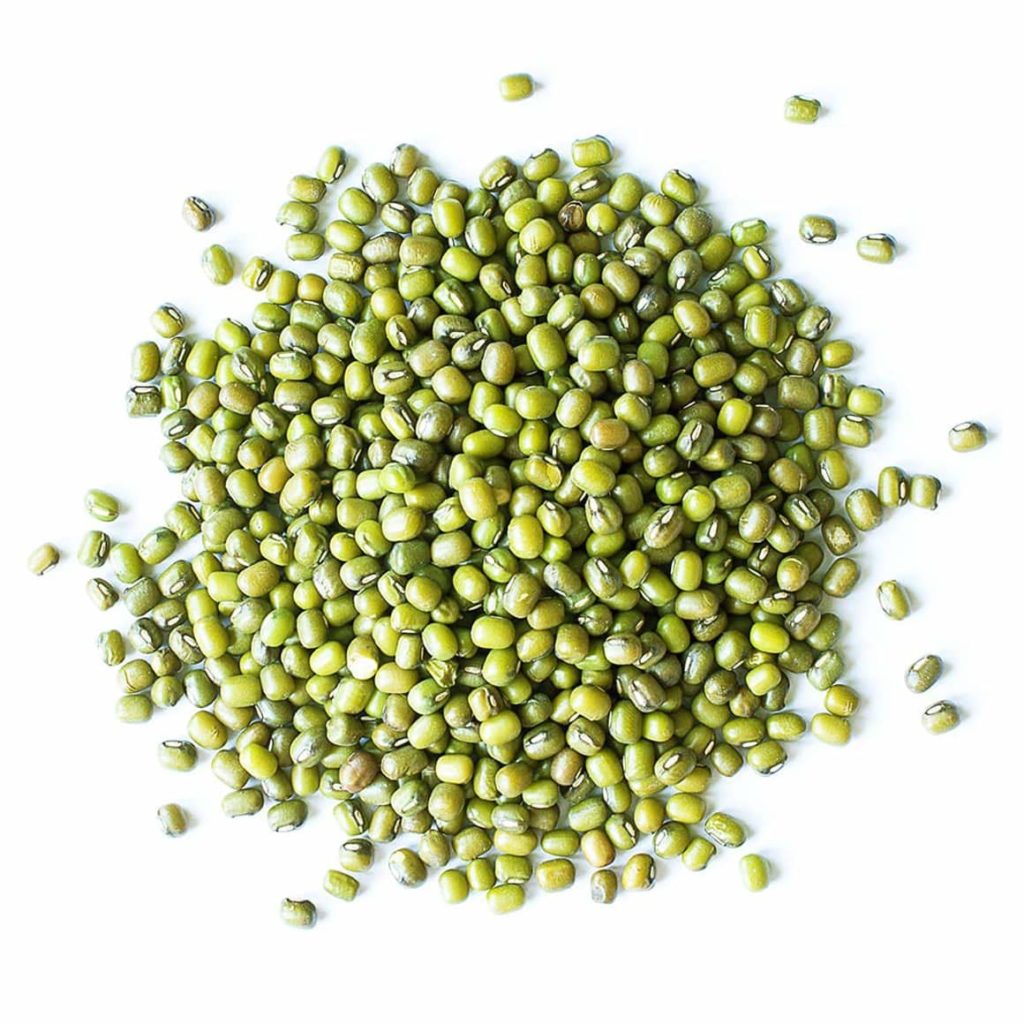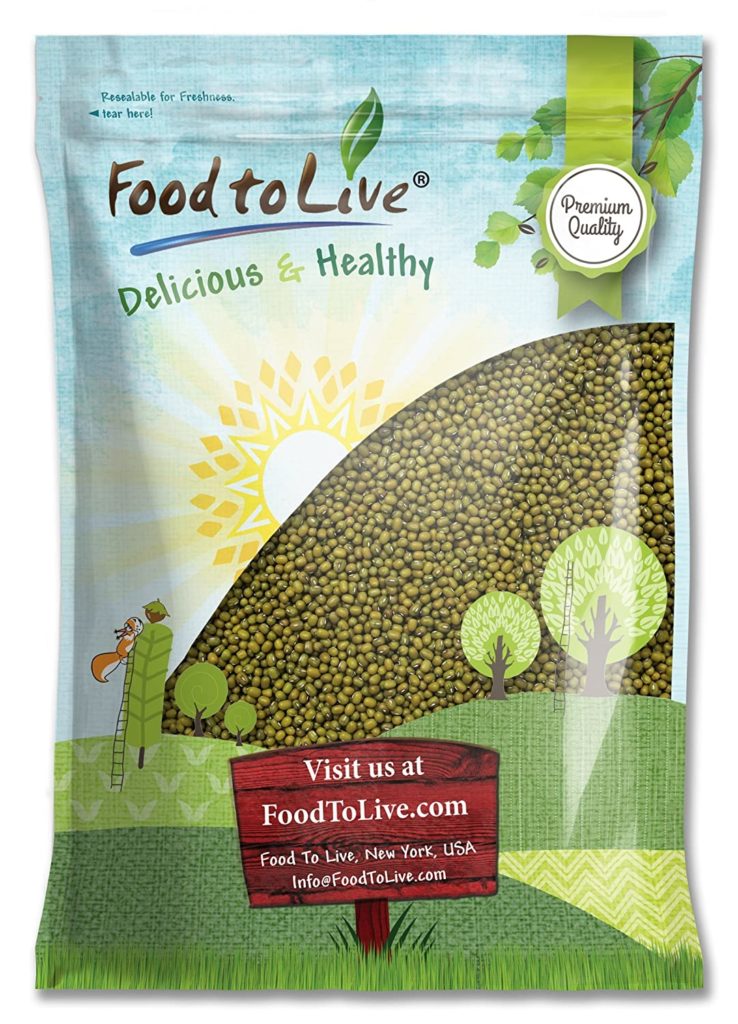The nutrition facts for dried mung bean are based on a 155-pound male body weight. Age, gender, amount of physical activity, and medical history all influence the nutritional value of this legume. Please keep in mind that the dietary amounts are simply a recommendation. You should speak with your doctor if you have any queries regarding your daily nutrition requirements. Food photos are for illustration purposes only and may feature similar or similarly related goods.
Mung beans have a good amount of B-complex vitamins in them. Thiamin, pyridoxine, and pantothenic acid are cofactors in the metabolism of carbohydrates and proteins, respectively. They also provide antioxidants and lower cholesterol levels, which assist the body in fighting cancer. They can help you lose weight and reduce constipation and are high in iron and zinc.
Dried Mung Bean Nutrition Facts
Mung beans are a high-protein food with a lot of fiber and complex carbs. Mung beans are an excellent low-fat nutrient source due to their low-fat content. They’re also a good copper source. Mung beans are high in antioxidants, which help counteract the adverse effects of free radicals. Heart disease, cancer, and chronic inflammation are linked to this process. here’s a table of Dried Mung Bean Nutrition Facts:
| Nutrient | Amount per Serving (100 grams) | % Daily Value* |
| Calories | 347 | 17% |
| Total Fat | 1 g | 2% |
| – Saturated Fat | 0 g | 0% |
| Cholesterol | 0 mg | 0% |
| Sodium | 15 mg | 1% |
| Total Carbohydrate | 63 g | 21% |
| – Dietary Fiber | 16 g | 64% |
| – Sugars | 2 g | |
| Protein | 24 g | 48% |
| Vitamin D | 0 mcg | 0% |
| Calcium | 132 mg | 13% |
| Iron | 6.7 mg | 37% |
| Potassium | 1,197 mg | 34% |
| Magnesium | 189 mg | 47% |
| Phosphorus | 367 mg | 37% |
*Percent Daily Values are based on a 2,000-calorie diet. Your daily values may be higher or lower depending on your calorie needs.
Are Dried Mung Beans Healthy?
Mung beans are high in minerals and antioxidants; thus, they may benefit your health. They may help prevent heatstroke, stimulate weight reduction, and lower “bad” LDL cholesterol, blood pressure, and blood sugar levels.
Mung beans are famous for sprouting, but they can also be consumed raw, and I’m not sure why you’d want to eat them raw. If you want to keep the volume down, gram flour (ground, roasted chickpeas) is a much superior pulse.
How Do You Eat Dried Mung Beans?
Mung beans are high in fiber and iron, and they cook quickly. Their earthy, mellow flavor works well in soups, curries, and dips. Mung bean sprouts add a satisfying crunch and nutritional boost to salads, sandwiches, and wraps.
Try them in a brown rice and bean bowl with curry or Thai tastes. Toss with broccoli and cabbage in a stir-fry. In this light vegetarian entrée or side, use them instead of edamame or green beans. Cooked mung beans can be substituted for lentils in recipes.
Is It Necessary To Soak Mung Beans?
Unlike black beans or chickpeas, they are small and quick to cook; thus, they don’t need to be soaked before cooking. Of course, soaking your mung beans is an option.
Mung beans should be soaked in gently salted water for at least 4 hours and preferably 5 hours. For every cup of beans, you’ll need 2-1/4 cups of the soaking water, plus 1/2 teaspoon of salt to aid soaking. Soak the dal for at least half an hour, but even a couple hours won’t help much if it’s old.
Is It Okay If I Eat Mung Beans Every Day?
Mung beans, in particular, are high in vitamin B-9, commonly known as folate, which aids in forming DNA in the body. Adults should get 400 micrograms of folate daily, and pregnant women should get 600 micrograms.
As a result, eating mung beans alone is unlikely to meet a person’s folate requirements Mung beans are high in minerals and antioxidants; thus, they may benefit your health. They may help prevent heatstroke, stimulate weight reduction, and lower “bad” LDL cholesterol, blood pressure, and blood sugar levels.
Is It True That Mung Beans Are Healthier Than Lentils?
Mung beans and lentils differ primarily because mung beans provide more calories, proteins, and dietary fiber than lentils. Mung beans and lentils are nutrient-dense foods high in calories, dietary fiber, and protein.
They are not lentils, alt; although they used to be regarded as part of the bean family, they have since been reclassified and are no longer considered beans.
It’s perplexing! … Dal is frequently misinterpreted as “lentils,” but it refers to a split version of various lentils, peas, chickpeas (chana), kidney beans, and other legumes.
How Long Does It Take To Cook Dried Mung Beans?
One cup of Mung Beans rinsed. Add 3 cups of stock and garlic to a medium-sized pot. Bring the water to a boil. Reduce heat to medium-low and simmer until vegetables are soft, about 20 minutes Preparation. Mung beans are a popular source of beansprouts because they quickly sprout thick, white, crisp shoots. Unlike other pulses, they can be cooked without soaking if preferred, though soaking does shorten the cooking time.
Set the stove on high and bring the pot, uncovered, to a boil. Reduce to low heat and cook for 45 minutes to an hour, stirring regularly. When most of the water has evaporated and the beans appear puffy, it’s done. Mungbeans, when compared to other legumes, are easier to digest than their competitors.
Fiber, which has anti-inflammatory qualities, is abundant in them. In addition, the beans have more protein than most other legumes, which slows down the body’s sugar-reduction process. They also include antibacterial and anti-inflammatory phytonutrients, which can aid the body’s fight against harmful germs and viruses. They also help in the prevention of a variety of chronic disorders.
Mung beans also contain a good amount of vitamin C. Because of their water-soluble nature, and it’s an excellent source of this antioxidant. Mung beans are high in protein and fiber as well. Mung beans should be soaked overnight before cooking. You can cook the beans straight from the can or soak them for a few hours. This will, however, shorten the cooking time and eliminate anti-nutrient chemicals.
Conclusion
Mung beans have enough folate and B-complex vitamins to keep you healthy. Thiamin, riboflavin, and pantothenic acid are all abundant in them. These nutrients, which are necessary for the body’s metabolism, may assist in preventing cancer and type 2 diabetes. They can also help with weight loss and constipation. Dry mung beans can be used to make stir-fries. Mung beans that have sprouted can also be used to flavor spring rolls.
Even though mung beans have a low-fat content, they are high in vitamins and minerals. Eighty percent of the daily folate requirement is met by just one cup of cooked mung beans. Mungbean is also a good supplier of phosphorus, magnesium, and zinc. Because of its high fiber content, you can eat many mung beans without feeling guilty about the calories.



